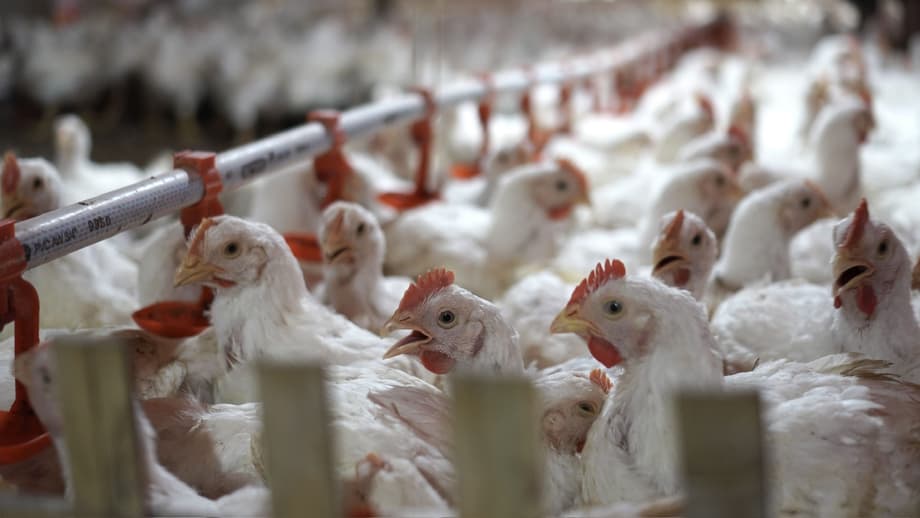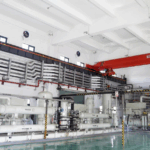Why eggs and chicken cost more right now
Indonesia is moving to build new poultry farms in provinces where egg and chicken prices sit above the government reference. Agriculture Minister Andi Amran Sulaiman said the plan targets broiler and layer capacity in high price areas to cool markets and even out supply. The move follows a jump in demand tied to the national free nutritious meal program, which will require an extra 1.1 million tons of chicken meat and 700,000 tons of eggs once fully rolled out. Egg and chicken prices helped lift monthly inflation in October 2025, while several provinces reported market prices above the National Food Agency farmer level benchmark. The ministry says new farms could also support employment, with up to 1.4 million jobs created as facilities come online.
- Why eggs and chicken cost more right now
- How the free meals program reshaped demand
- Government strategy to cool prices: map hot spots, build farms
- Supply side pressures that keep prices firm
- Production outlook and how fast new capacity can arrive
- Smallholders and integrators, different starting points
- New housing and technology trends that could lift output
- How prices feed into inflation and household budgets
- At a Glance
Price signals are clear. Bank Indonesia’s food price dashboard shows eggs selling between 28,000 and 29,900 rupiah per kilogram in West Sumatra, South Sumatra, Banten, and Yogyakarta, above the farmer level reference of 26,500 rupiah per kilogram set in National Food Agency Regulation No. 5/2022. Broiler meat also posted a month on month rise. Statistics Indonesia reports eggs rose 4.43 percent month on month in October, contributing 0.04 percentage points to the headline index, while broiler meat rose 1.13 percent and added 0.02 points. Headline inflation reached 2.86 percent year on year in October as the food, beverages, and tobacco group climbed 4.99 percent, with red chili peppers as the largest single driver.
How the free meals program reshaped demand
The free nutritious meal program is changing buying patterns across Indonesia. Nutrition Fulfillment Service Units, known locally as SPPG kitchens, source eggs and chicken from nearby markets and retailers. That steady institutional buying has pulled more volume out of local supply and lifted prices in some areas. Store shelves are not empty, but competition for the same items has grown and that tightness shows up in weekly price moves and in the volatile food basket inside the inflation report.
Statistics Indonesia has underlined that it does not compute a neat line that attributes inflation directly to the meals program. Even so, the timing of higher demand lines up with the program rollout and with firming prices for eggs and chicken meat. The picture is similar across several provinces, where market prices sit above the farmer level benchmark. The government sees these trends and is moving capacity closer to the point of consumption to relieve pressure.
Pudji Ismartini, deputy for distribution and services statistics at Statistics Indonesia, described the shift in demand since the program began several months ago and how that relates to the recent readings.
“Demand for the two commodities has risen sharply since the program began, and eggs and broiler meat were the main drivers of inflation in the volatile food category in October,” Pudji Ismartini said.
Government strategy to cool prices: map hot spots, build farms
The Agriculture Ministry will map districts and cities with the widest gap between market prices and the reference rate, then site new layer and broiler farms to shorten supply routes. The goal is to make production more equitable and stabilize prices nationwide. When high price pockets exist far from concentrated production in Java, transport adds cost and shocks travel quickly into retail prices. Putting farms nearer to those markets can cut freight, reduce spoilage risk, and add competition in local supply chains.
The plan also carries a jobs push. The ministry expects about 1.4 million positions across farming, feed deliveries, chick supply, processing, cold storage, and retail logistics as projects move from permits to production. The minister has framed the push as part of a people centered economy and the Pancasila economy promoted by President Prabowo Subianto. He has also offered a simple summary of the approach.
Andi Amran Sulaiman, the Agriculture Minister, said the government intends to start where consumers feel the pinch most and then add capacity.
“We will identify wherever prices are high and establish poultry farms there,” Agriculture Minister Andi Amran Sulaiman said.
Regions already reporting prices above the farmer level reference, such as parts of Sumatra and Yogyakarta, are likely first candidates. The ministry has not published a complete timeline. Farm projects typically require land access, biosecurity planning, environmental clearance, and connections to feed supply and hatcheries before birds are placed. That sequence can take months, although existing integrators can move faster by repurposing or expanding facilities.
Supply side pressures that keep prices firm
Even as demand rises, supply costs have been climbing. Feed, which is the largest single input in poultry production, has been squeezed by tight domestic corn supply. Domestic corn prices moved up during the third quarter, then eased after stocks were released, yet they remain high relative to imported grain. To limit feed cost spikes, a government program is distributing 52,400 tons of corn at subsidized prices, and the state affiliated livestock company Berdikari plans to import 600,000 tons of feed wheat in 2025 to help mills blend rations while the next major corn harvests arrive.
Bapanas, the National Food Agency, has positioned the corn program as a way to support producers of eggs and chicken meat while also protecting consumers from pass through cost increases. Arief Prasetyo Adi, head of Bapanas, set out the rationale.
“The affordable cost of feed will stabilize egg prices and, as a result, keep the cost of chicken meat under control. The program will ensure sustainable egg production by the end of this year,” Arief Prasetyo Adi said.
Broiler production costs have also faced pressure from higher prices for day old chicks, live birds and feed in several regions. Hatchery supply, often managed under placement limits to balance supply and farm gate prices, can be relaxed if the government wants more rapid output growth. That choice, however, must be balanced with biosecurity capacity, vaccination coverage, and market absorption so that weak points do not show up later as disease losses or price collapses at the farm.
Production outlook and how fast new capacity can arrive
Officials say supply can expand ahead of the peak rollout of the meal program in 2025. Indonesia has reached self sufficiency in chicken meat and eggs, with reported surpluses of about 0.12 million tons and 0.17 million tons, according to the Agriculture Ministry. The livestock and animal health directorate has kept annual chicken meat output near 4.2 million tons and eggs near 6.5 million tons, with small surpluses on both lines. As more Nutrition Fulfillment Service Units open, those surpluses are expected to be absorbed. Officials plan to scale SPPG kitchens from about 2,000 in operation to 6,000 and then 8,000 by August 2025, which will channel steady institutional demand for eggs and chicken into local markets. To accelerate supply, the ministry can adjust limits on chick placements.
Agung Suganda, Director General of Livestock and Animal Health at the Agriculture Ministry, has outlined options to raise throughput if demand keeps rising.
“We will soon invite all poultry industry stakeholders to discuss strategies and prepare for the expansion of SPPG kitchens. If we fully lift the day old chick production limit, national distribution could reach 90 million chicks per week,” Agung Suganda said.
New farms take time to plan and build. Construction of closed houses, ventilation, feeding and watering systems, and manure handling typically runs from several weeks to a few months for medium scale sites once permits are in hand. Integrators that already run supply chains can expand more quickly by adding houses or retrofitting older ones. Smallholder cooperatives can scale too, but financing and technical support are often needed to meet biosecurity and climate control standards.
Smallholders and integrators, different starting points
Indonesia mixes large integrated companies with a vast network of smallholder growers. Large players control feed mills, hatcheries, farms, and processing. They have easier access to credit and modern housing. Smallholders operate flocks with fewer resources. They depend on local traders for feed, chicks, and market access. Rising feed costs, heat stress during longer hot spells, and inconsistent biosecurity can hurt small farms more, since a small change in mortality or growth can erase margins.
Policy makers describe the farm build out as a people focused effort. Delivering those jobs and stable prices will likely require tools tailored to smaller operators. Common measures used in Indonesia and similar markets include training, easier access to vaccines and veterinary services, and low cost financing for climate friendly housing and equipment.
- Credit programs for closed house upgrades that improve temperature control and feed conversion
- Reliable access to day old chicks and feed at transparent prices through producer groups or cooperatives
- Extension services that raise biosecurity standards and vaccination coverage against avian influenza and Newcastle disease
- Cold chain support so that meat can move to market with less waste in hot regions
These steps help reduce the gap between efficient integrators and small farms. They also reduce disease risk across regions, which protects both farmers and consumers. Many of these supports already exist in some provinces. Scaling them in the same areas where new farms will be built can increase the odds that production gains reach markets as lower prices.
New housing and technology trends that could lift output
Poultry housing in Indonesia is changing as producers chase efficiency and respond to welfare debates. Many layer farms are moving toward aviary systems instead of cages. Broiler producers are investing in multi tier cage setups that allow more birds per square meter while maintaining airflow and litter management. Closed house technology with automated feeding and cooling reduces heat stress and improves feed conversion, a key driver of cost per kilogram.
These upgrades are capital intensive, which is why partnerships between large companies, banks, and smallholders matter. A closed house with fans and evaporative cooling can cut mortality during hot months and maintain growth, which in turn smooths supply into markets. If the new farms adopt these designs from the start, they can lower unit costs and shield production from weather shocks that are becoming more common.
How prices feed into inflation and household budgets
Eggs and chicken are central to Indonesian diets. They are affordable sources of protein compared with beef and fish, so changes in their prices affect many households. The inflation report divides food into a volatile group where prices can jump from one month to the next. Eggs and broiler meat are in that group. When their prices climb, even modest monthly increases can tilt the overall index because so many people buy them every week.
Statistics Indonesia reported that eggs added 0.04 percentage points to inflation in October, and broiler meat added 0.02 points. That is not a surge, yet it matters in regions where the budget share for food is large. Red chili peppers delivered the biggest kick to the annual food group increase, which highlights how several staples can move at the same time. The government maintains a farmer level reference price to support producers and a consumer reference to anchor retail expectations. When market prices run above those levels for an extended period, it signals that either supply is tight, costs are elevated, or both. Building farms closer to consumption and easing feed costs aim at both sides of that equation.
At a Glance
- Indonesia will build new broiler and layer farms in provinces where egg and chicken prices exceed government reference rates
- Free nutritious meals program is expected to need 1.1 million tons of chicken meat and 700,000 tons of eggs
- Egg prices in several provinces range from 28,000 to 29,900 rupiah per kilogram, above the 26,500 rupiah farmer reference
- Eggs rose 4.43 percent month on month in October and broiler meat rose 1.13 percent, adding 0.06 points to headline inflation combined
- Agriculture Ministry projects up to 1.4 million jobs from new farm projects and related logistics
- Bapanas launched a 52,400 ton subsidized corn program and state firm Berdikari plans 600,000 tons of feed wheat imports in 2025
- Officials may lift limits on day old chick placements to reach 90 million chicks per week if needed
- Upgrades such as closed houses and multi tier cages can boost efficiency, though smallholders need finance and training to adopt them




